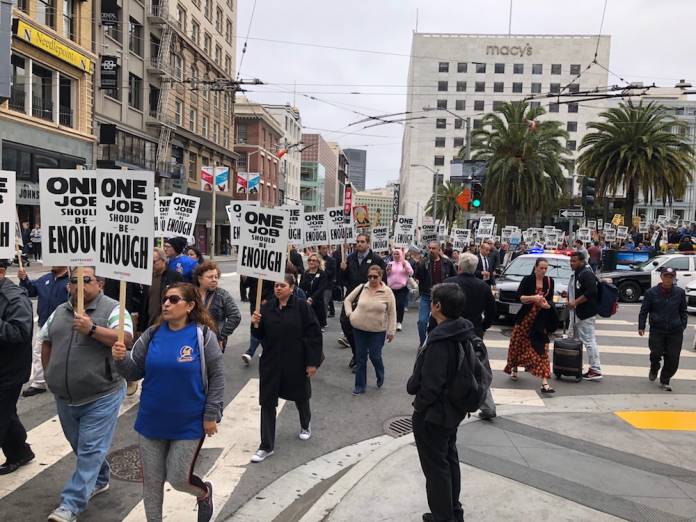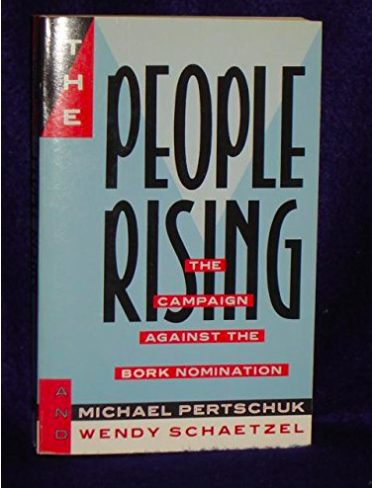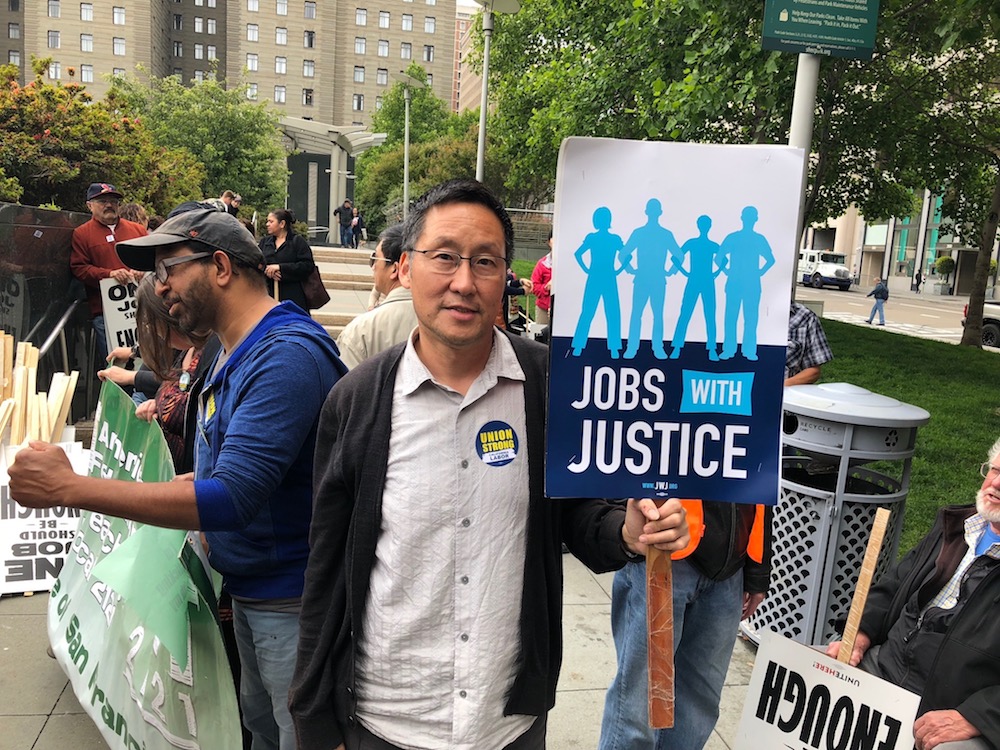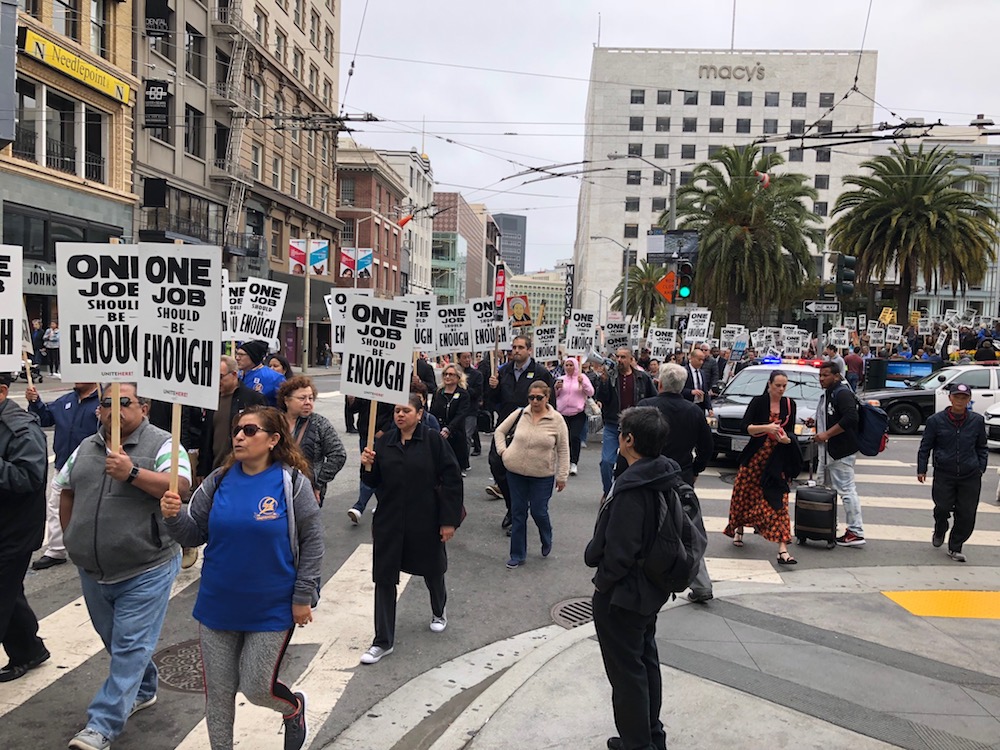
It’s been a very bad week at the US Supreme Court – and it could get a whole lot worse.
Justice Anthony Kennedy was the only person among the conservatives on the court who kept them from going completely backward on civil rights and sending the judiciary back into the 19thCentury. Now he’s stepping down, and Trump will want to replace him with someone far, far worse.

But one of the most important points that is getting missed about Justice Anthony Kennedy and his record on the Supreme Court is that he wasn’t President Reagan’s first choice.
Reagan in 1987, toward the end of his administration, damaged by the Iran-Contra scandal and by some accounts, starting to lose his mental focus, put forward the name of Robert Bork to replace the retiring Lewis Powell.
Bork was the most radical right-wing judge on the federal appeals bench, and that was saying a lot. He argued openly that the Constitution offered no right to privacy, that big corporate mergers were good for consumers, and that judges should be bound by the “original intent” of the framers of the Constitution. He was a “majoritarian” who didn’t believe that courts should seek to protect the rights of the minority in a civil society.
The campaign to defeat the Bork nomination was massive and nationwide in scope. He was the first nominee the ACLU had ever opposed. Feminist groups, who realized he could be key to overturning Roe v. Wade, organized in nearly every state. The NAACP made defeating his nomination a top priority. There were national TV ads against him. I remember those days; the Bay Guardian, which rarely did national news, ran a cover story called “The case against Judge Bork,” and several progressive legal groups asked for thousands of extra copies to distribute. The Senate Judiciary Committee hearings, led by then-Sen Joe Biden, were carried live on NPR. An entire book was written about the campaign.
This was, in other words, a huge deal.
In the end, six Republicans joined 52 Democrats in voting to reject him.
Now: In those days, there were actually reasonable Republicans in the Senate. There was less partisan bitterness and more room for real discussion. This is a different era.
But it wasn’t just the fact that some GOP senators were moderates that doomed Bork’s nomination. It was the organizing. Weicker and Packwood (from Connecticut and Oregon) realized that the vast majority of their constituents didn’t want Bork – and that their political futures were in jeopardy if they voted for him.
After Bork was rejected, Reagan went with Kennedy – a more moderate conservative, who was quickly confirmed 97-0.
Today, the major media are saying that the Democrats don’t have the votes to stop even the worst Trump nominee. Maybe not; this is a different world, and it’s hard to imagine even two or three Republicans defying their leadership and rejecting a Trump nominee.
But there has never been a campaign around a Supreme Court nomination like the Bork campaign – and it worked. Maybe it could again.
The media coverage of the Muslim Ban seems to have, for the most part, gotten it right: This is a radical, horrible decision, not only because it allows Trump to single out and block immigrants because of their religion but because the Court basically said that the president can do and say whatever he wants as long as he is protecting what he thinks is our national security.
Although the Court tried to suggest that it’s not endorsing racism, that’s exactly what it did. And in the process, it emboldened Trump and the worst of his followers.
It also signals that lower-court decisions like this one, to stop the border madness, could be overturned. Already, right-wingers are saying that the same logic can be used to build a border wall.
Then today we got Janus.

It’s important to understand the background on this case and why it’s about a lot more than whether public employees can be forced to pay union fees.
This is the endgame of a long, well-organized, well-funded attack on public employee unions be right-wing groups that, of course, want to undermine labor but more specifically want to damage one of the biggest and most powerful sources of progressive political funding and organizing.
Unions that represent teachers, nurses, and city, state, and federal workers have been a bright spot in the labor movement in the past several decades. As traditional manufacturing and industrial unions have been in decline, public-sector unions have been growing, and using their financial and political clout to bring progressive change – and not just for their own members.

There aren’t many institutions in the progressive world that can stand up to the power and money of big business – but public-sector unions have been a key one.
The goal of Janus was to force those unions to reduce their political activities and limit their ability to challenge the right-wing corporate agenda.
As Randi Weingarten, president of the American Federation of Teachers, put it today:
Let’s be clear, the Janus case was about defunding unions. It was about who will have power in our country—working people or big corporate interests. That’s why the case was being funded by wealthy donors and corporate interests. First, they pledged $80 million to “defund and defang” unions. Then, the Kochs, after receiving the Trump tax cut, upped the ante with $400 million to undermine public education and “break” the teachers unions. Why? Because unions fight for a better life for people, and corporate interests see that as a threat to their power.
The big public-sector unions have been expecting and planning for this decision for several years. They can and will continue to organize and fight back – particularly in the Bay Area.
Gordon Mar, director of Jobs with Justice, told me today that “the Janus decision was expected, and it’s just another example of the right-wing corporate control of our government. But here in San Francisco, we are in the streets to show that this is a union town.”
But across the country, this is going to be a huge challenge. It’s also potentially a huge motivation.
This afternoon, more than 1,000 labor folks, many of them members of Local 2 and Jobs with Justice but also Teamsters, Local 1021 members, teachers, and others joined in a rally at Union Square that led to a noisy march through the area to demand fair contracts from the hotels.
That’s a sign of what’s to come: More people in the streets, more activism, more efforts to defeat Trumpism – both on a national and a local level.
Because let’s remember: The idea that markets can solve all our problems, that “streamlining” regulations on business is a good thing, that we need to look to the private sector as our salvation – that’s the same message that is contained in the Janus case.
So let’s fight it at home, too.


